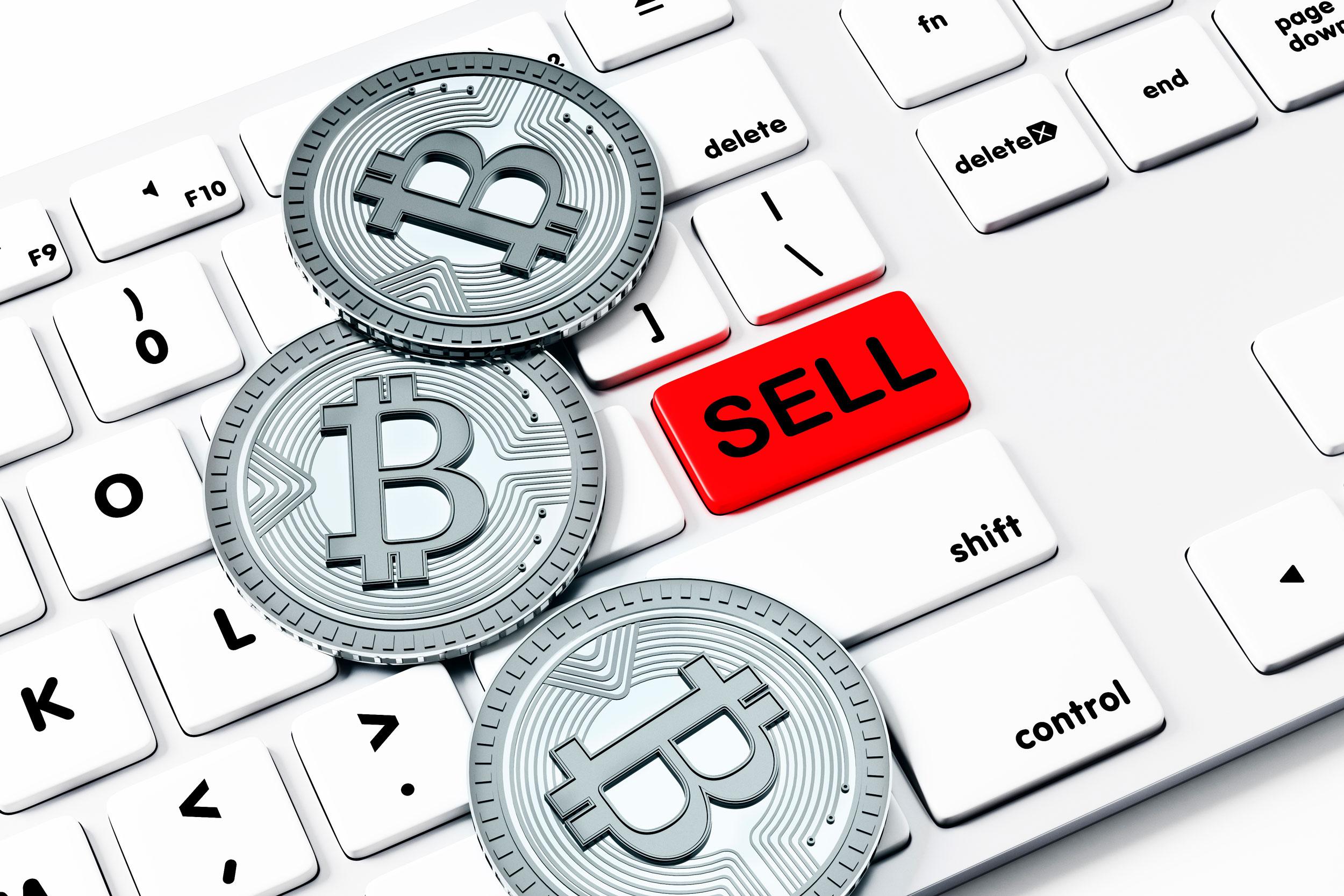Choosing the Right Bitcoin Exchange for Your Needs
When it comes to buying and selling Bitcoin, choosing the right exchange is crucial. With so many options available, it can be overwhelming to decide which one to use. In this section, we’ll discuss the different types of Bitcoin exchanges and the factors to consider when choosing an exchange.
There are two main types of Bitcoin exchanges: centralized and decentralized. Centralized exchanges are the most common type and are operated by a single company. They offer a user-friendly interface and often have a wide range of payment options. However, they can be vulnerable to hacking and may require users to provide personal identification.
Decentralized exchanges, on the other hand, are operated by a network of computers rather than a single company. They offer greater security and anonymity, but can be more complex to use. When choosing an exchange, it’s essential to consider factors such as fees, security, and user interface.
Fees can vary significantly between exchanges, so it’s essential to choose one that offers competitive rates. Security is also a top priority, so look for exchanges that have a strong track record of protecting user funds. Finally, consider the user interface and make sure it’s easy to navigate and use.
Some popular Bitcoin exchanges include Coinbase, Binance, and Kraken. Each of these exchanges has its strengths and weaknesses, so it’s essential to do your research and choose the one that best meets your needs. By choosing the right exchange, you can ensure a smooth and secure experience when buying and selling Bitcoin.
Setting Up a Bitcoin Wallet: A Secure Storage Solution
A Bitcoin wallet is a software program that allows users to store, send, and receive Bitcoins. Having a secure Bitcoin wallet is essential for anyone looking to buy and sell Bitcoin. In this section, we’ll discuss the different types of Bitcoin wallets and provide tips on how to set up a wallet and ensure its security.
There are several types of Bitcoin wallets, including desktop, mobile, and hardware wallets. Desktop wallets are installed on a computer and provide a high level of security. Mobile wallets are installed on a smartphone and offer a convenient way to store and use Bitcoins on the go. Hardware wallets are physical devices that store Bitcoins offline and provide an additional layer of security.
When choosing a Bitcoin wallet, it’s essential to consider the level of security it provides. Look for a wallet that offers two-factor authentication, encryption, and a secure password. It’s also important to choose a wallet that is user-friendly and easy to navigate.
To set up a Bitcoin wallet, users will need to download and install the software or app. Once installed, users will need to create a new wallet and set up a secure password. It’s also important to make a backup of the wallet and store it in a safe place.
Some popular Bitcoin wallets include Electrum, MyEtherWallet, and Ledger Live. Each of these wallets has its strengths and weaknesses, so it’s essential to do your research and choose the one that best meets your needs. By setting up a secure Bitcoin wallet, users can ensure that their Bitcoins are safe and secure.
In addition to setting up a secure wallet, users should also take steps to protect their Bitcoins from hackers and other malicious actors. This includes using strong passwords, enabling two-factor authentication, and keeping the wallet software up to date. By taking these steps, users can help to ensure that their Bitcoins are safe and secure.
How to Buy Bitcoin: A Step-by-Step Guide
Buying Bitcoin can seem like a daunting task, especially for those new to the world of cryptocurrency. However, with the right guidance, it can be a straightforward process. In this section, we’ll provide a step-by-step guide on how to buy Bitcoin, including the process of creating an account, verifying identity, and making a purchase.
The first step in buying Bitcoin is to choose a reputable exchange. There are many exchanges to choose from, including Coinbase, Binance, and Kraken. When choosing an exchange, consider factors such as fees, security, and user interface.
Once you’ve chosen an exchange, you’ll need to create an account. This typically involves providing some basic information, such as your name and email address. You’ll also need to create a secure password and enable two-factor authentication to protect your account.
After creating an account, you’ll need to verify your identity. This typically involves providing identification documents, such as a driver’s license or passport. This step is necessary to comply with anti-money laundering regulations and to ensure the security of the exchange.
Once your account is verified, you can make a purchase. Most exchanges offer a variety of payment methods, including credit cards, bank transfers, and cash. When making a purchase, be sure to carefully review the terms and conditions, including the fees and exchange rates.
Some popular payment methods for buying Bitcoin include credit cards, bank transfers, and cash. Credit cards are a convenient option, but be aware that they often come with higher fees. Bank transfers are a more cost-effective option, but may take longer to process. Cash is also an option, but be aware that it may require a physical meetup with the seller.
When buying Bitcoin, it’s essential to consider the current market price. You can check the current price on websites such as CoinMarketCap or CryptoCompare. It’s also a good idea to set a budget and stick to it, as the price of Bitcoin can be volatile.
By following these steps, you can buy Bitcoin with confidence. Remember to always do your research, carefully review the terms and conditions, and consider the current market price. With the right guidance, buying Bitcoin can be a straightforward and secure process.
Understanding Bitcoin Price Charts and Market Analysis
Bitcoin price charts and market analysis are essential tools for anyone looking to buy and sell Bitcoin. By understanding how to read charts and analyze market trends, you can make informed trading decisions and maximize your profits.
There are several types of Bitcoin price charts, including line charts, candlestick charts, and technical indicators. Line charts show the price of Bitcoin over time, while candlestick charts provide more detailed information about price movements. Technical indicators, such as moving averages and relative strength index (RSI), can help you identify trends and make predictions about future price movements.
When analyzing Bitcoin price charts, it’s essential to consider the time frame. Short-term charts, such as 1-minute or 1-hour charts, can help you identify short-term trends and make quick trading decisions. Long-term charts, such as daily or weekly charts, can help you identify long-term trends and make more informed investment decisions.
Market analysis is also crucial when buying and selling Bitcoin. This involves analyzing market trends, news, and events to predict future price movements. By staying up-to-date with market news and trends, you can make informed trading decisions and maximize your profits.
Some popular technical indicators for Bitcoin price analysis include moving averages, RSI, and Bollinger Bands. Moving averages can help you identify trends and predict future price movements. RSI can help you identify overbought and oversold conditions, while Bollinger Bands can help you identify volatility and predict future price movements.
When using technical indicators, it’s essential to consider the time frame and the specific indicator being used. Different indicators are better suited for different time frames and market conditions. By combining multiple indicators and considering different time frames, you can make more informed trading decisions and maximize your profits.
In addition to technical indicators, it’s also essential to consider fundamental analysis when buying and selling Bitcoin. This involves analyzing the underlying fundamentals of the Bitcoin market, such as supply and demand, adoption rates, and regulatory environment. By considering both technical and fundamental analysis, you can make more informed trading decisions and maximize your profits.
How to Sell Bitcoin: A Step-by-Step Guide
Selling Bitcoin can be a straightforward process, but it’s essential to follow the right steps to ensure a smooth and secure transaction. In this section, we’ll provide a step-by-step guide on how to sell Bitcoin, including the process of creating a sell order, setting a price, and confirming the transaction.
The first step in selling Bitcoin is to choose a reputable exchange. There are many exchanges to choose from, including Coinbase, Binance, and Kraken. When choosing an exchange, consider factors such as fees, security, and user interface.
Once you’ve chosen an exchange, you’ll need to create a sell order. This typically involves specifying the amount of Bitcoin you want to sell and the price you’re willing to accept. You can choose to sell your Bitcoin at the current market price or set a limit order to sell at a specific price.
After creating a sell order, you’ll need to confirm the transaction. This typically involves verifying your identity and confirming the sale. Once the transaction is confirmed, the Bitcoin will be transferred to the buyer’s wallet, and the funds will be deposited into your account.
There are different selling strategies to consider when selling Bitcoin, including market orders and limit orders. Market orders allow you to sell your Bitcoin at the current market price, while limit orders allow you to set a specific price and wait for a buyer to accept it.
When selling Bitcoin, it’s essential to consider the fees associated with the transaction. Different exchanges charge different fees, so it’s essential to choose an exchange that offers competitive rates. Additionally, consider the security of the exchange and the buyer’s wallet to ensure a smooth and secure transaction.
In addition to selling Bitcoin on an exchange, you can also sell it directly to a buyer. This can be done through online marketplaces or in-person transactions. However, be aware that selling Bitcoin directly to a buyer can come with additional risks, such as the risk of fraud or non-payment.
By following these steps and considering the different selling strategies and fees, you can sell your Bitcoin with confidence. Remember to always do your research, carefully review the terms and conditions, and consider the security of the exchange and the buyer’s wallet.
Risk Management and Trading Strategies for Bitcoin
Risk management is a crucial aspect of Bitcoin trading. By understanding the different trading strategies and managing risk, you can maximize your profits and minimize your losses. In this section, we’ll discuss the importance of risk management and provide tips on how to manage risk and maximize profits.
There are several trading strategies to consider when trading Bitcoin, including day trading, swing trading, and long-term investing. Day trading involves buying and selling Bitcoin within a single trading day, while swing trading involves holding onto Bitcoin for a few days or weeks. Long-term investing involves holding onto Bitcoin for an extended period, often months or years.
Each trading strategy comes with its own set of risks and rewards. Day trading can be high-risk, high-reward, while long-term investing can be lower-risk, lower-reward. Swing trading can be a good middle ground, offering a balance of risk and reward.
To manage risk, it’s essential to set clear goals and limits. This includes setting a budget, determining your risk tolerance, and establishing a stop-loss order. A stop-loss order is an order to sell Bitcoin when it reaches a certain price, helping to limit your losses.
Another key aspect of risk management is diversification. By diversifying your portfolio, you can reduce your risk and increase your potential returns. This can include investing in other cryptocurrencies, stocks, or bonds.
Technical analysis is also an essential tool for managing risk and maximizing profits. By analyzing charts and trends, you can make informed trading decisions and avoid costly mistakes.
In addition to technical analysis, it’s also essential to stay up-to-date with market news and trends. This can include following reputable sources, such as CoinDesk or CryptoSlate, and staying informed about regulatory changes and market developments.
By managing risk and employing effective trading strategies, you can maximize your profits and minimize your losses. Remember to always do your research, set clear goals and limits, and stay informed about market news and trends.
Common Mistakes to Avoid When Buying and Selling Bitcoin
Buying and selling Bitcoin can be a complex process, and there are several common mistakes to avoid. By understanding these mistakes, you can ensure a successful trading experience and maximize your profits.
One of the most common mistakes to avoid is poor security practices. This includes using weak passwords, not enabling two-factor authentication, and not keeping your software up to date. By taking these simple steps, you can protect your Bitcoin and prevent hacking.
Another common mistake to avoid is inadequate research. This includes not understanding the basics of Bitcoin, not researching the market, and not staying up-to-date with news and trends. By doing your research, you can make informed trading decisions and avoid costly mistakes.
Emotional decision-making is also a common mistake to avoid. This includes making impulsive decisions based on emotions, rather than logic and reason. By staying calm and rational, you can make better trading decisions and avoid costly mistakes.
Not diversifying your portfolio is also a common mistake to avoid. This includes putting all your eggs in one basket, rather than spreading your investments across different assets. By diversifying your portfolio, you can reduce your risk and increase your potential returns.
Not setting clear goals and limits is also a common mistake to avoid. This includes not setting a budget, not determining your risk tolerance, and not establishing a stop-loss order. By setting clear goals and limits, you can manage your risk and maximize your profits.
Not staying up-to-date with market news and trends is also a common mistake to avoid. This includes not following reputable sources, not staying informed about regulatory changes, and not monitoring market developments. By staying informed, you can make better trading decisions and avoid costly mistakes.
By avoiding these common mistakes, you can ensure a successful trading experience and maximize your profits. Remember to always do your research, set clear goals and limits, and stay informed about market news and trends.
Mastering the Art of Bitcoin Trading: A Beginner’s Guide
Bitcoin trading can be a complex and intimidating process, especially for beginners. However, with the right guidance and knowledge, anyone can learn how to buy and sell Bitcoin like a pro. In this article, we’ll provide a comprehensive guide on how to master the art of Bitcoin trading, including the basics of Bitcoin, how to choose the right exchange, and how to set up a secure wallet.
We’ll also cover the different types of Bitcoin exchanges, including centralized and decentralized exchanges, and explain the factors to consider when choosing an exchange. Additionally, we’ll provide a step-by-step guide on how to buy and sell Bitcoin, including the process of creating an account, verifying identity, and making a purchase.
Furthermore, we’ll discuss the importance of risk management in Bitcoin trading and explain the different trading strategies, including day trading, swing trading, and long-term investing. We’ll also provide tips on how to manage risk and maximize profits.
Finally, we’ll cover the common mistakes to avoid when buying and selling Bitcoin, including poor security practices, inadequate research, and emotional decision-making. By following these tips and guidelines, you can ensure a successful trading experience and maximize your profits.
Whether you’re a seasoned trader or just starting out, this guide will provide you with the knowledge and skills you need to master the art of Bitcoin trading. So, let’s get started and explore the world of Bitcoin trading!






